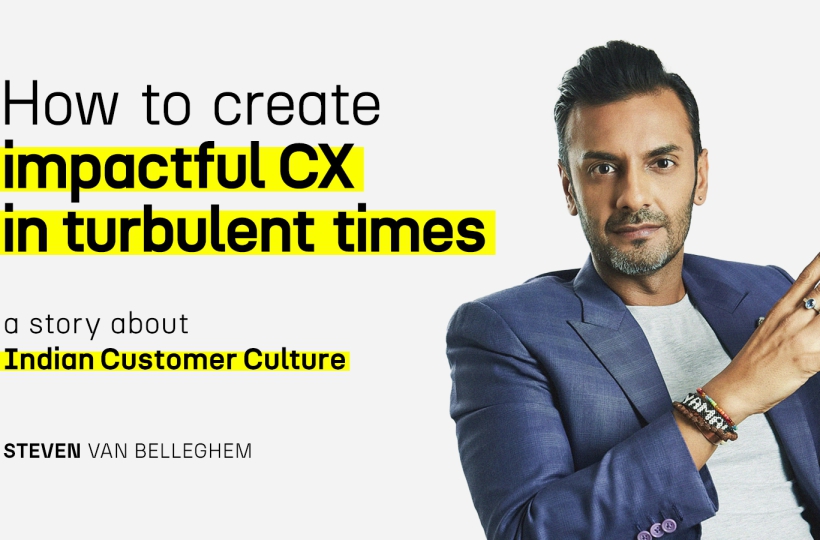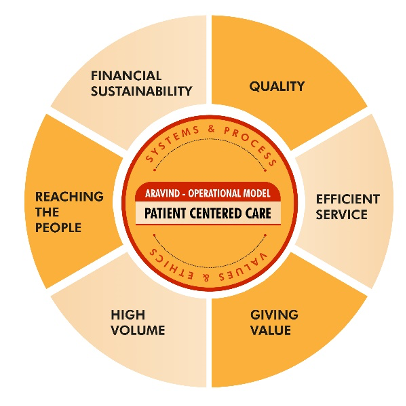A story about Indian Customer Culture: Impactful CX in turbulent times

Sewa
This Indian society-driven business approach is deeply rooted into the concept of Sevā or Sewa – which means service – which is woven through the fabric of their culture. In India, even if a person owns very little, they will always share whatever they have. This Sewa tradition is exactly the reason why so many of the Indian unicorns and corporates are focused on building great societies first. Tata Steel, for instance, gives 60% to its educational, developmental, medical and charitable trust funds. And Hindustan Unilever Limited (the former Hindustan Vanaspati Manufacturing Co) offers 25% off every single cent it earns back to the community.
Democratizing education
But it is not just about charity. Many Indian companies also integrate this dynamic of ‘giving back to the community’ inside their business models. There are so many fantastic company cases of that in India. Like subscription-based educational platform company Unacademy which wants to democratize education by making it accessible to all. Though India has made great strides in education, it still has a long way to go. For instance, in 2020, only 61% of 3 to 5 year-olds in India were enrolled in early childhood education programs, compared to 83% on average across OECD countries.
So their service is truly relevant for its customers. Through an affordable subscription model, Unacademy provides content on foundational (K-12) and skill building courses (programming, photography, entrepreneurship, etc.), not just in English but in no less than 14 different Indian languages. In May of last year, it also opened its first offline learning centre in Rajasthan. But it goes further than that, it also empowers others to help them educate: through the Graphy platform, it helps creators launch their own online school in under 60 seconds.
Better lives for farmers
The agriculture sector is one of the biggest in the Indian economy, with 60 percent of the Indian population working there, contributing about 18 percent to India’s GDP. It provides a livelihood to over 151 million people. But because of an inefficient middle men and supply chain system, local farmers are struggling with inconsistent demand and low prices. Ninjacart’s B2B platform helps solve these problems by sourcing fresh produce from farmers and selling it directly to businesses, across India.
I love how their website really markets them as social problem-solvers with a higher purpose:
The problem
- Farmers experience price risk, information asymmetry about demand, distribution inefficiency, and receive late payments.
- Retailers face problems like higher costs, low quality and unhygienic produce, high price volatility, and the everyday hassle of going to the market.
- The traditional Supply Chain is highly inefficient, unorganized, and has a high rate of food wastage.
Our Solution
- We eliminate intermediaries by taking control of the Supply Chain by using technology and analytics.
- We build reliable, cost-effective, and high-speed logistics and infrastructure to solve for inefficiencies in the Supply Chain.
- On one end, farmers get better prices and consistent demand, and on the other end, retailers receive fresh produce at competitive prices that are delivered to their doorstep.
Don’t make the mistake of thinking that this is purely charity. Ninjacart offer advantages to every stakeholder in the supply chain, not just creating better CX for their own B2B customers, the farmers and retailers, but even the end consumer
Eliminating needless blindness
Another uniquely inspiring Indian business story is that of hospital chain ‘Aravind Eye Hospitals’, which has had a major impact in eradicating cataract related blindness in India. The Indian healthcare system had been really struggling with tackling this avoidable type of disease because of a number of challenges like growing population, inadequate infrastructure, low per capita income, aging population, diseases in epidemic proportions and illiteracy.
So Dr. Venkataswamy established an alternative health care model in the seventies that could supplement the efforts of the government but also be self-supporting at the same time. And it has a fascinating business model to accomplish its mission to ‘eliminate needless blindness’: no less than 50% of its patients receive services that are either free of cost or at steeply subsidized rate. The reason why it can keep this up and remain financially self-sustainable are the benefits of scale, of course, because it delivers high value to a high patient volume.
So the takeaway from this is that if you find a societal problem to solve that affects a huge number of people, you’ll be able to keep the margins low and the price affordable. That’s a luxury that many Indian companies have because A. an emerging country still has many problems to solve and B. it’s the second largest country in the world by population so the market potential is huge. But seeing that our world has been struggling with so many global problems, finding a solution for many people, will definitely be feasible over here, too.
The amazing part is that what started as a 11-bed hospital in the seventies has now grown into a conglomerate, the Aravind Eye Care System. It’s not just a growing network of eye care facilities but also a postgraduate institute, a management training and consulting institute, an ophthalmic manufacturing unit, a research institute and eye banks. Here too, they do not just find solutions to a burning platform, at the same time they educate and empower others to work on that problem too.
Challenges and culture
The reason why so many Indian companies have a higher, societal purpose, is the abundance of challenges of an emerging country. But it’s also a culture thing, rooted in the Sewa philosophy. I love how Shayamal put it: “The strength that’s holding an Indian organization up is not just coming from its 1000 or 10,000 employees. It’s the strength of the entire community whom they give back to. That community is invested in keeping them up, not just the people inside their organization.” So when you build for society, and for community at the center of your business, the loyalty and trust of all of your stakeholders, customers included, happens on an entirely different level.
And with the rise of the Never Normal Customer out here in the west – who deeply worries about global health, environment, social, financial etc. problems and expects companies to help solve these – learning from that philosophy, and broadening your circle of influence, will certainly give you an edge.

